Dorset
JURASSIC COASTLINE
∗ FIRST ENGLISH TRADE UNION
∗ DORSET’S OWN WRITER∗ FIRST PLANNED ENGLISH VILLAGE ∗ FIRST SMOKE ∗ THE FACE OF ENGLAND
Sherborne Castle – built by Sir Walter Raleigh in 1894 as his last home.
DORSET FOLK
John Russell ∗ Anthony Ashley Cooper ∗ Sir James Thornhill ∗ Sarah Fielding ∗ William Fox Talbot ∗ Verney Lovett Cameron
The Jurassic Coast
The Dorset coastline has more classic examples of geographical features than any other county coastline. These include the second largest natural harbour in the world, Poole Harbour (where the ashes of novelist H.G. Wells were scattered by his sons in 1946), the longest shingle bar in Europe, Chesil Beach, at 10 miles (16 km), the highest sea cliff on the south coast of England, Golden Cap, at 627 ft (191 m) high, an almost perfect crescent bay at Lulworth Cove and the famous rock arch of Durdle Door. Known as the Jurassic Coast, and popular with fossil hunters, the Dorset coast, along with a small section of the East Devon coast, is THE FIRST NATURAL SITE IN ENGLAND TO BE ACCORDED WORLD HERITAGE STATUS.
Tolpuddle Martyrs
TOLPUDDLE is a quiet little village to the east of Dorchester, now by-passed by the A35 and seemingly almost deserted. And yet the name of Tolpuddle reverberates around the world, for it was here, in 1834, that the trade union movement was born.
In the early 19th century, the Industrial Revolution and the gradual introduction of mechanised farming had left farm workers in a parlous position. Wages were falling, there was mass unemployment, and riots were erupting throughout the country. A farm labourer from Tolpuddle, GEORGE LOVELESS, decided to meet with the local farmers to get agreement for a guaranteed standard agricultural wage of 10 shillings. The farmers themselves pleaded poverty and, perversely, reduced the labourers’ wages from 8 shillings to 6 shillings, barely subsistence level.
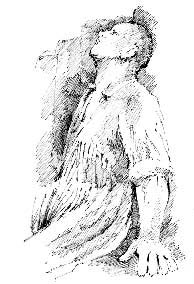
Loveless called a meeting of some 40 labourers at the Tolpuddle cottage of his brother-in-law, THOMAS STANDFIELD, and here they decided to form THE FRIENDLY SOCIETY OF AGRICULTURAL LABOURERS. Members would not accept any work for less than 10 shillings a week, or work for any farmer who dismissed a labourer for belonging to a union. They were non-political and utterly opposed to violence of any sort, but the local landowners, nervous of riots, were convinced this was a revolutionary organisation dedicated to their overthrow.
The downfall of the Tolpuddle labourers was their initiation ceremony, which required new members to swear an oath not to reveal the business of the society or the identities of its members. The six ringleaders, GEORGE LOVELESS, his brother JAMES LOVELESS, THOMAS STANDFIELD, his son JOHN STANDFIELD, JAMES BRINE and JAMES HAMMETT, were arrested and charged with ‘administering illegal oaths’, under an act brought in to deal with the Spithead Mutiny in 1797 and never repealed.
They were found guilty at Dorchester Assizes and given the maximum sentence of seven years’ transportation to Australia. There was uproar. The men had done nothing wrong, and their dignity and forbearing under such injustice had made them popular heroes. Nonetheless they were shipped to Australia and it wasn’t until two years later, in March 1836, that relentless public pressure, including marches and demonstrations, forced the government to repeal their sentences. Only James Hammett returned to Tolpuddle, and he is buried in the village churchyard. The others all emigrated to Canada.
Thomas Standfield’s Cottage
In 1934 the Trades Union Congress built six cottages in Tolpuddle as a memorial to the six martyrs, and every year in July a march is held in the village. There is not much left of the sycamore tree under which the martyrs met, but Thomas Standfield’s cottage, birthplace of the Friendly Society, THE FIRST ENGLISH TRADE UNION, still stands.
Thomas Hardy
1840–1928
THOMAS HARDY was born at HIGHER BOCKHAMPTON, north-east of Dorchester, in ‘a long low cottage with a hipped roof of thatch’ and lived there until he was 20. Higher Bockhampton becomes Melstock in his first novel, Under the Greenwood Tree, which is a bright and optimistic portrayal of Dorset life. Part of Hardy’s importance in English literature is the invaluable insight he gives us into life in 19th-century rural England. It was a time when England was moving towards an industrial society, with all the upheavals that entailed, and it is noticeable that his novels get progressively gloomier as time passes and the traditional country life he was born into begins to disappear.
Hardy lived virtually all his life in Dorset and incorporated many Dorset towns, villages and landmarks into his novels.
Dorchester, in particular, is associated with Thomas Hardy and serves as Casterbridge in one of his more sombre stories, The Mayor of Casterbridge. In 1885 he built himself a home, which he called Max Gate, on the eastern edge of the town, and this is where he died in 1928. It is now open to the public.
Not only did he leave a legacy of brilliant, if harrowing, novels, but also many fine poems. For the last 30 years of his life he concentrated on poetry, and his epic poem The Dynasts, about the life of Napoleon, is compared by many to Milton’s Paradise Lost.
Thomas Hardy’s heart is buried in his beloved Dorset, at STINSFORD, just outside Dorchester. The nation claimed the rest of him, which lies in Poets’ Corner in Westminster Abbey, alongside other great observers of English life such as Charles Dickens and Rudyard Kipling.
Buried nearby at Stinsford is the Poet Laureate CECIL DAY-LEWIS, (1904–72), who wished to be buried here because he loved Dorset and the work of Thomas Hardy. He is the father of actor Daniel Day-Lewis.
Milton Abbas
MILTON ABBAS is THE FIRST PLANNED VILLAGE IN ENGLAND. In 1771 the Earl of Dorchester built himself a mansion next to Milton Abbey and decided that the old village spoilt his view. So he knocked it down and built a new village over the hill and out of sight. This was not quite as appalling as it might seem, for the old village was dirty and tumbledown, whereas the new one was well laid out with attractive cottages, a village hall, church and inn. Today the properties in Milton Abbas are much sought after.
Sherborne
SHERBORNE CASTLE was built at the end of the 16th century by Sir Walter Raleigh in the grounds of the old 12th-century castle of the Bishop of Salisbury. The story is told that Raleigh was sitting in the garden here enjoying a quiet smoke when a servant, having never seen tobacco before, doused him with a bucket of water, thinking that his master was on fire.
SHERBORNE ABBEY has THE HEAVIEST PEAL OF EIGHT BELLS IN THE WORLD at 7.5 tons, and the abbey’s medieval fan vaulting is THE EARLIEST VAULTING IN ENGLAND TO COVER A WHOLE CHURCH CEILING.
Isle of Portland
Dorset has given a proud face to many notable English buildings, with stone carved from the quarries of the ISLE OF PORTLAND. A haunting, rocky, almost treeless peninsula, 4 miles (6.4 km) long, Portland’s bleak atmosphere makes it easy to believe in the legend that in Celtic times this was the Isle of the Dead – where the insane were sent to eke out their wretched lives in caves and hollows.
The architect Inigo Jones was the first person to recognise the potential of Portland stone for building, using it for the Banqueting House in London’s Whitehall. Other notable buildings constructed with Portland stone are St Paul’s Cathedral, the east front of Buckingham Palace, Manchester’s Central Library, and the United Nations headquarters in New York. The gravestones of British soldiers killed in the two world wars are made from Portland stone, as is Britain’s national memorial, the Cenotaph.
In the mid-19th century convicts were used to quarry the stone for the great Portland breakwater, which protects the second deepest harbour, and second largest artificial harbour, in the world, after Rotterdam.
From a high point of 496 feet (151 m) in the north, the wedge-shaped Isle of Portland slopes down to a lighthouse at PORTLAND BILL on the southern tip. The contraception campaigner MARIE STOPES (1881–1958) used to come here to study fossils, and after her death her ashes were scattered across the cliffs. The fast currents and savage rocks off the Bill have claimed many lives, including that of the poet William Wordsworth’s brother John, who went down with his ship, the Abergavenny, off Portland Bill in 1805.
Portland is connected to the mainland by CHESIL BEACH, which stretches for 10 miles (16 km) to near Abbotsbury, and is THE LONGEST SEA BAR IN EUROPE. A unique feature of Chesil Beach is the precise way the pebbles are graded, increasing in size from west to east. Local fishermen, in fog or at night, can tell how far along the beach they are by the size of the pebbles. The beach encloses a lagoon known as the Fleet, part of which provides a haven for Europe’s largest swannery, established in the 14th century by the monks of Abbotsbury. In stormy weather whole ships have been hurled over the bar into the lagoon, where they remain trapped for ever.
Moonfleet, J.M Falkner’s classic novel about smuggling is set here.
Portland cement, the standard type of modern cement, is so called because its inventor, Joseph Aspdin, noted that the colour of the cement, when set, resembles Portland stone.
In 1961 Portland was at the centre of a spy scandal when it was discovered that two clerks at the Underwater Weapons Establishment at Portland, Harry Houghton and Ethel Gee, were supplying secrets to a Russian spy, George Lonsdale, at a secret rendezvous near the Old Vic theatre in Waterloo. He passed them on to a second-hand book dealer, Peter Kroger, and his wife Helen, who lived in a bungalow in Ruislip. The Krogers then reduced the documents to microdots, which they pasted over full stops in the books, and then sent to Russia.
Another prestige building material from Dorset is Purbeck marble, which is not a true marble but a hard, highly polished limestone that can be seen in many English churches and cathedrals, notably Lincoln, and is used for floors and pillars and occasionally for fonts.
Well, I never  knew this
knew this
about
DORSET FOLK
John Russell
1485–1555
About a mile (1.6 km) east of Burton Bradstock lies an old grey farmhouse called BERWICK. One windy day in 1506, the owner, a young farmer called JOHN RUSSELL, rode out from Berwick to answer a cry for help from his kinsman, Thomas Trenchard, of Wolfeton House near Dorchester. Trenchard was entertaining some rather unexpected guests, Archduke Philip, ruler of the Netherlands, and his wife Joanna of Castile. They had been on their way to Madrid when bad weather had forced them to take shelter in Weymouth Bay. Sir Thomas Trenchard, as the senior man on the spot, was obliged to invite them home until the storm abated, and he was having a difficult time as he spoke no Spanish and his guests spoke no English.
Coming from a family of wine shippers, young Russell had been to Spain and learnt the language as part of his education, and now had the opportunity to put his experience to good use. In fact, he charmed the royal visitors so much that he was later asked to accompany them to Windsor to see Henry VII. The English king was equally taken with the wit and intelligence of the young man from Dorset and bade him join the Royal Court.
Under Henry VIII, John Russell distinguished himself in war and diplomacy and was eventually made Earl of Bedford. At the Dissolution of the Monasteries, a grateful king showered him with estates, including Tavistock in Devon, large parts of Exmoor, the lands of Thorney Abbey in Cambridgeshire and several acres of London. To top it all, Russell gained Woburn Abbey, now the principal seat of his descendants, the Dukes of Bedford, and the largest privately owned park in England. Not a bad return for learning Spanish.
Anthony Ashley Cooper, 1st Earl of Shaftesbury
1621–83
ANTHONY ASHLEY COOPER, 1ST EARL OF SHAFTESBURY, whose ancestral home is at Wimborne St Giles, was one of the first Whigs and was responsible for the Habeas Corpus Act of 1679, which was introduced into the English legal system as an essential safeguard against wrongful or arbitrary imprisonment by the state.
THE WHIGS were mostly Protestant aristocrats with Liberal tendencies who supported the exclusion of the Catholic James II from the English throne, championed the supremacy of Parliament over the Crown, and upheld the rights of Nonconformists. The term Whig was a derogatory name used by their political opponents the Tories, and came from the word Whiggamore, meaning a Scottish Presbyterian rebel.
HABEAS CORPUS, literally ‘you may have the body’, gives a detainee or his representative the right to demand that his custodian must state on which charge he is being held, and to require that he be brought before a court to determine if he is being legally held in custody. As Britain has no written constitution, habeas corpus has long been regarded as ‘worth a hundred constitutional articles guaranteeing individual liberty’. In the first years of the third millennium, habeas corpus is under serious threat from the British government and European Law, for the first time since its introduction over 300 years ago.
Born in Dorset
SIR JAMES THORNHILL (1675–1734), artist who painted the interior of the dome of St Paul’s and the Painted Hall at Greenwich, and the first English-born artist to receive a knighthood, was born in MELCOMBE REGIS.
SARAH FIELDING (1710–68), sister of the novelist and magistrate Henry Fielding and author of The Governess, the first full-length English novel written for children, was born in EAST STOUR.
WILLIAM FOX TALBOT (1800–87), photography pioneer and creator of the oldest known photographic negative (of the oriel window at Lacock Abbey in Wiltshire), was born in EVERSHOT.
VERNEY LOVETT CAMERON (1844–94), African explorer and the first European to cross Equatorial Africa from coast to coast, was born in RADIPOLE.


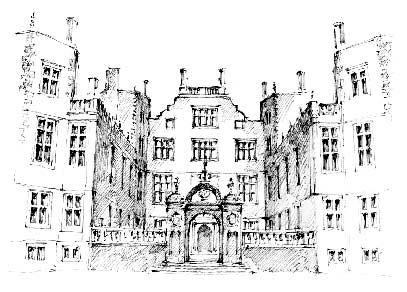



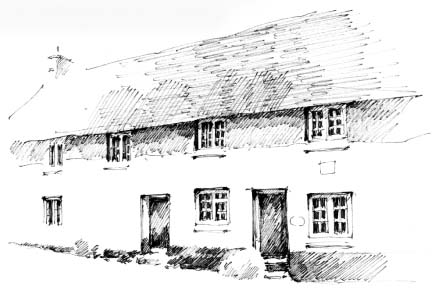

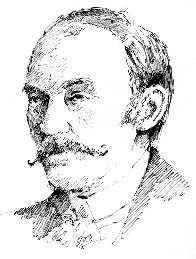


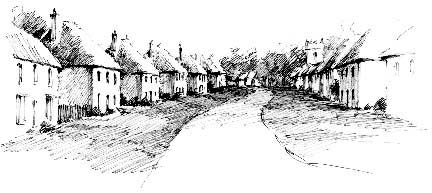

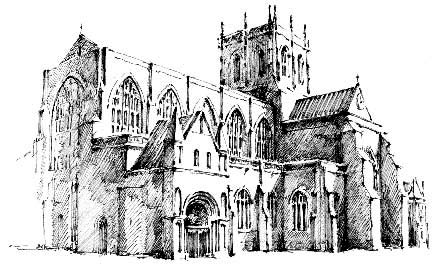
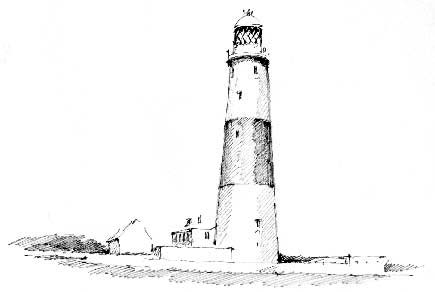
 knew this
knew this